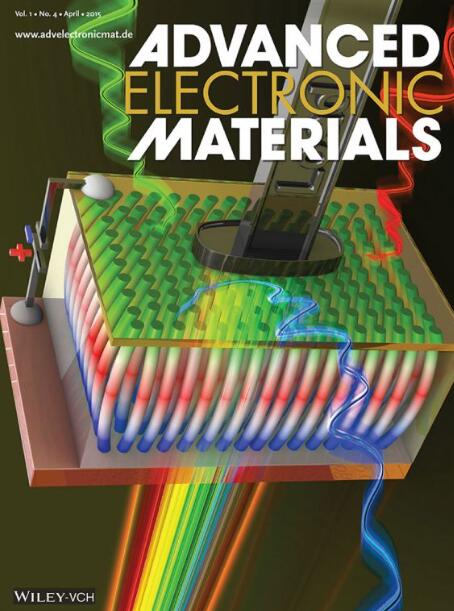Oxygen Doping in Ferroelectric Wurtzite-type Al0.73Sc0.27N: Improved Leakage and Polarity Control
IF 5.3
2区 材料科学
Q2 MATERIALS SCIENCE, MULTIDISCIPLINARY
引用次数: 0
Abstract
This study examines systematic oxygen (O)-incorporation to reduce total leakage currents in sputtered wurtzite-type ferroelectric Al0.73Sc0.27N thin films, along with its impact on the material structure and the polarity of the as-grown films. The O in the bulk Al0.73Sc0.27N was introduced through an external gas source during the reactive sputter process. In comparison to samples without doping, O-doped films showed almost a fourfold reduction of the overall leakage current near the coercive field. In addition, doping resulted in the reduction of the steady-state leakage currents by roughly one order of magnitude at sub-coercive fields. The microstructure analysis through X-ray diffraction (XRD) and scanning transmission electron microscopy (STEM) indicated no notable structural degradation in the bulk Al0.73Sc0.27N. The maximum O-doped film exhibited a c-axis out-of-plane texture increase of only 20%, rising from 1.8°, while chemical mapping indicated a consistent distribution of O throughout the bulk. Our results further demonstrate the ability to control the as-deposited polarity of Al0.73Sc0.27N via the O-concentration, changing from nitrogen (N)- to metal (M)-polar orientation. Thus, this article presents a promising approach to mitigate the leakage current in wurtzite-type Al0.73Sc0.27N without incurring any significant structural degradation of the bulk thin film, thereby making ferroelectric nitrides more suitable for microelectronic applications.

氧掺杂铁电纤锌矿型Al0.73Sc0.27N:改善漏损和极性控制
本研究考察了系统氧(O)掺入以减少溅射纤锌矿型铁电Al0.73Sc0.27N薄膜的总泄漏电流,以及它对生长薄膜的材料结构和极性的影响。Al0.73Sc0.27N块体中的O是在反应溅射过程中通过外部气源引入的。与未掺杂的样品相比,o掺杂薄膜在矫顽力场附近的总泄漏电流几乎减少了四倍。此外,在亚矫顽力场下,掺杂导致稳态泄漏电流降低了大约一个数量级。通过x射线衍射(XRD)和扫描透射电子显微镜(STEM)的微观结构分析表明,Al0.73Sc0.27N块体没有明显的结构降解。最大O掺杂膜的c轴面外织构仅增加20%,从1.8°上升,而化学映射表明O在整个体中分布一致。我们的研究结果进一步证明了通过o浓度控制Al0.73Sc0.27N沉积极性的能力,从氮(N)-极性转变为金属(M)-极性。因此,本文提出了一种很有前途的方法,可以减轻纤锌矿型Al0.73Sc0.27N中的泄漏电流,而不会导致大块薄膜的任何显著结构退化,从而使铁电氮化物更适合微电子应用。
本文章由计算机程序翻译,如有差异,请以英文原文为准。
求助全文
约1分钟内获得全文
求助全文
来源期刊

Advanced Electronic Materials
NANOSCIENCE & NANOTECHNOLOGYMATERIALS SCIE-MATERIALS SCIENCE, MULTIDISCIPLINARY
CiteScore
11.00
自引率
3.20%
发文量
433
期刊介绍:
Advanced Electronic Materials is an interdisciplinary forum for peer-reviewed, high-quality, high-impact research in the fields of materials science, physics, and engineering of electronic and magnetic materials. It includes research on physics and physical properties of electronic and magnetic materials, spintronics, electronics, device physics and engineering, micro- and nano-electromechanical systems, and organic electronics, in addition to fundamental research.
 求助内容:
求助内容: 应助结果提醒方式:
应助结果提醒方式:


